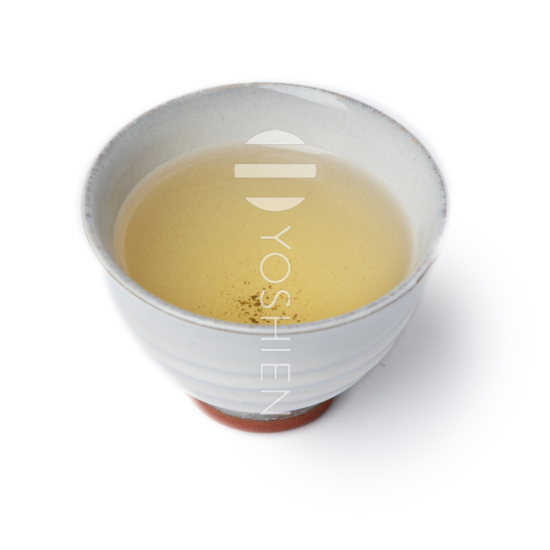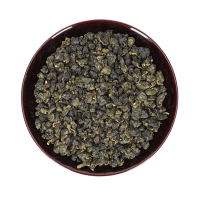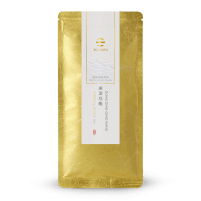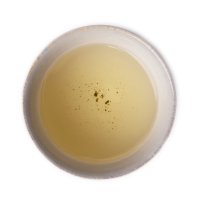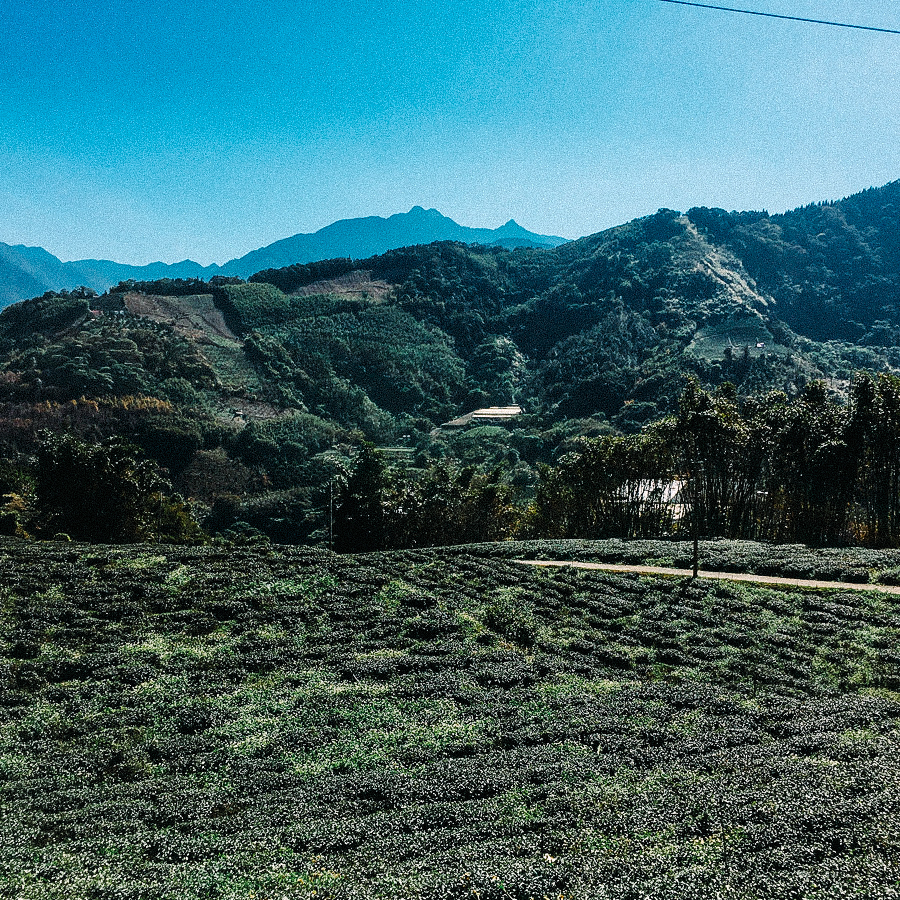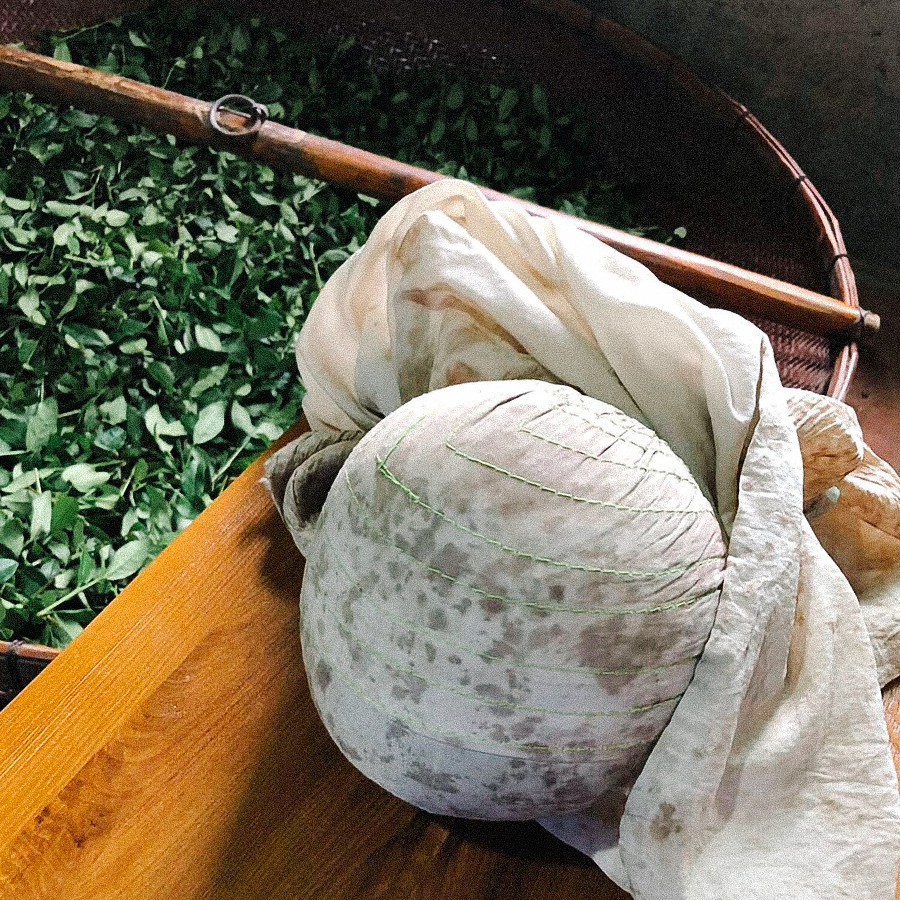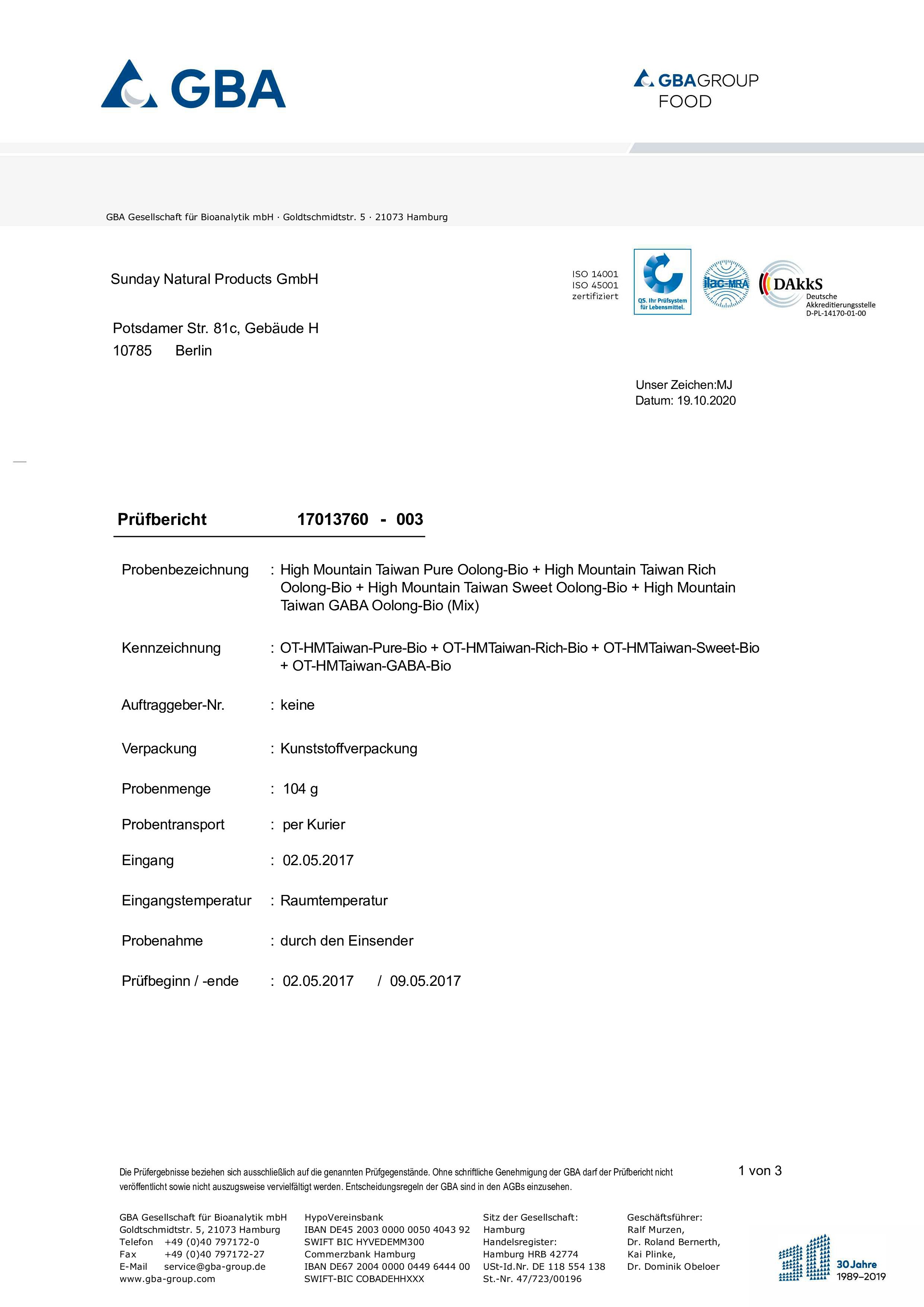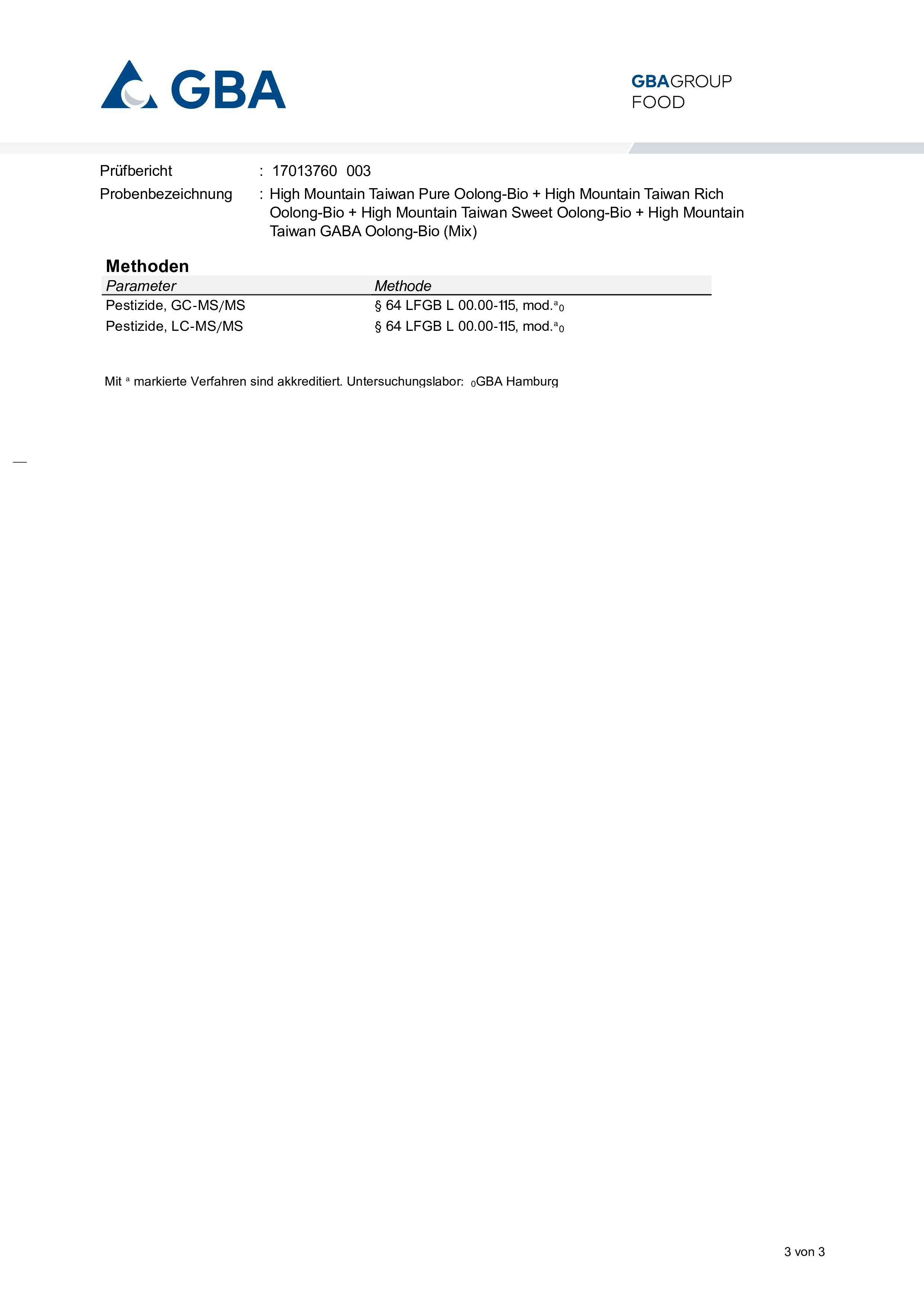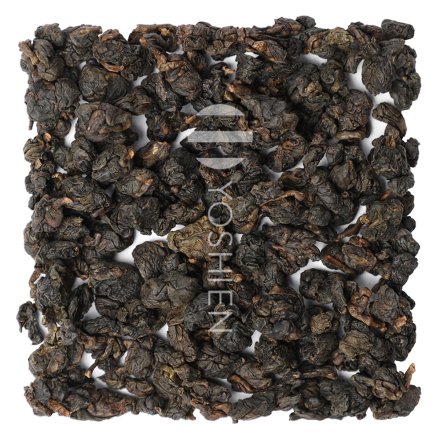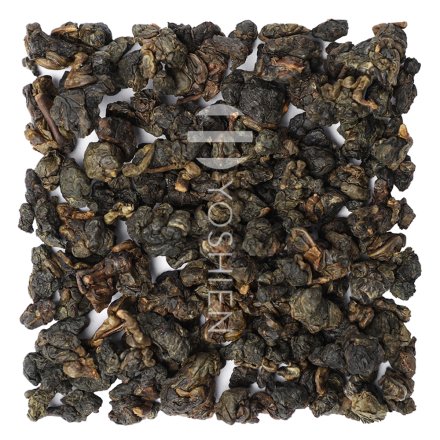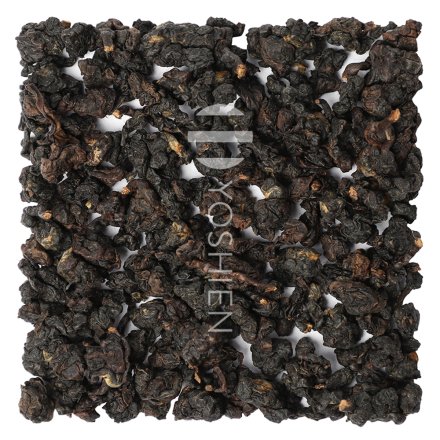With up to 800m elevation, Dong Ding Oolong does not count among the High Mountain teas. The climate, however, is excellent for the cultivation of high-quality oolong: extensive sun in the morning, fog in the afternoon, and a lot of wind.
The cultivars qin xing or four seasons are typically used for good Dong Ding oolongs.
For oolong teas, typically the bud and first three leaves are harvested by hand. These leaves are typically allowed to grow a bit larger than other teas such as green tea. After harvest the leaves are set out to wither in the sun, which begins the oxidation and fermentation processes as the leaves dry. Thereafter the leaves are brought indoors to continue withering where they are repeatedly moved about. Small tears in the leaves, especially at the edges, allow juice from the leaves to seep out and oxidise.
During the next stage the leaves are laid out on either bamboo plates or large nets and placed in a fermentation chamber. The leaves are monitored until the tears in the leaves turn reddish-brown as a marker of fermentation.
Once the desired degree of fermentation has been reached, further oxidation and fermentation are halted with heat in an oven (kill green). Thereafter the leaves are broken up in a rolling machine so that the remaining leaf juice comes out and coats the outside of the leaves. The tea is then rolled, partially by hand and partially by machine (Ball Cloth Rolling, Baorou 包揉), to attain its characteristic half-rolled form. In the last stage the tea is placed in the oven to roast.
Single Origin
This tea is exclusively sourced from the above mentioned tea farm in Xinyi. Sourced directly from the tea farmer.
Organic Certification






